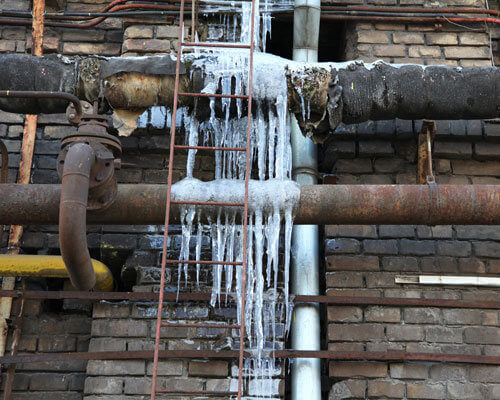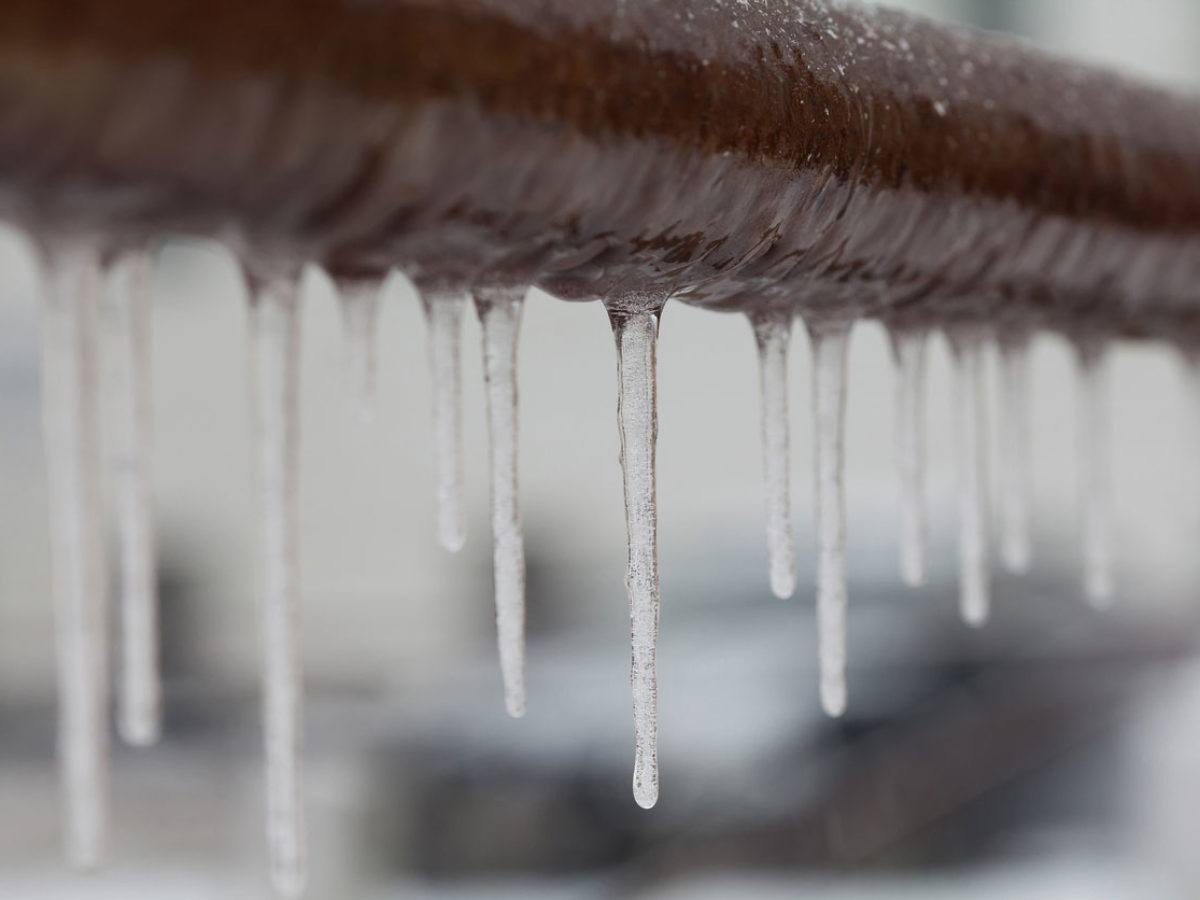What to Handle a Frozen AC Pipe - Critical Measures for Recovery
What to Handle a Frozen AC Pipe - Critical Measures for Recovery
Blog Article
Here down the page you will find additional very good information and facts with regards to What Causes AC Pipes To Freeze?.

Introduction
Finding that your a/c pipeline is iced up can be worrying, particularly throughout warm summertime when you count on your air conditioning unit one of the most. Comprehending what to do in such a situation is important to avoid more damage to your cooling system and ensure your comfort indoors.
Comprehending the Causes
Numerous variables can contribute to the cold of an air conditioner pipeline. Comprehending these reasons can help you address the issue properly.
Absence of Airflow
One usual root cause of a frozen air conditioner pipeline is inadequate airflow. When the airflow over the evaporator coil is limited, it can create the coil to go down below freezing temperature, bring about ice development on the pipe.
Low Refrigerant Levels
Inadequate cooling agent degrees in your air conditioning system can also cause a frozen pipeline. Low cooling agent degrees can trigger the pressure in the system to go down, leading to the cold of dampness on the evaporator coil.
Winter Conditions
In chillier climates, freezing temperature levels outside can contribute to the cold of a/c pipes. If your air conditioner unit is not properly shielded or if there are leaks in the ductwork, cool air can infiltrate the system, creating the pipeline to ice up.
Dirty Air Filters
Dirty or clogged air filters can limit air movement in your air conditioning system, causing various concerns, including a frozen pipe. It's important to replace or clean your air filters regularly to guarantee correct airflow and stop ice buildup.
Signs of a Frozen Air Conditioning Pipe
Acknowledging the indicators of an icy air conditioner pipe is important for punctual action.
Decreased Airflow
If you notice a substantial decrease in air flow from your vents, it might indicate a frozen pipeline.
Ice Buildup on the Pipe
Noticeable ice build-up on the refrigerant line or the evaporator coil is a clear indicator of a frozen a/c pipe.
Weird Sounds from the Unit
Unusual sounds, such as hissing or gurgling, coming from your air conditioning system can signify that there's ice existing on the pipeline.
Immediate Actions to Take
When confronted with a frozen AC pipeline, it's essential to act promptly to stop more damages to your cooling system.
Shutting off the AC
The initial step is to switch off your a/c unit to avoid the system from running and worsening the problem.
Looking for Blockages
Evaluate the area around the interior system for any type of obstructions that might be blocking air movement, such as furniture or curtains.
Thawing the Pipe
You can use gentle techniques like placing towels taken in cozy water around the frozen pipe to aid thaw it slowly.
Safety nets
Taking preventive measures can help prevent future events of a frozen air conditioner pipe.
Routine Maintenance Checks
Schedule normal upkeep checks with a professional HVAC professional to make certain that your air conditioning system is running efficiently.
Transforming Air Filters
On a regular basis change or clean your air filters to stop air flow restrictions and keep optimum efficiency.
Shielding Exposed Pipes
If your a/c pipelines are revealed to cold temperature levels, take into consideration shielding them to avoid cold throughout cold weather.
Seeking Professional Help
If DIY methods fail to solve the problem or if you're uncertain regarding exactly how to continue, it's ideal to look for aid from a certified HVAC service technician.
When DIY Methods Fail
If your attempts to thaw the pipeline or address various other issues are not successful, it's time to contact an expert.
Significance of Hiring a Professional HVAC Technician
A licensed HVAC service technician has the competence and devices necessary to identify and repair issues with your a/c system securely and effectively.
Final thought
Dealing with an icy air conditioning pipeline can be an aggravating experience, yet recognizing just how to react can assist lessen damage and recover convenience to your home. By understanding the causes, acknowledging the indications, and taking prompt activity, you can effectively resolve the concern and avoid future incidents.
What to Do If Your AC Line Is Frozen
Make Sure All Supply and Return Air Vents Are Open
If you notice problems with airflow, the first thing you should do is check your supply and return vents. Supply vents distribute clean, conditioned air throughout your home. As this air becomes stale, it’s pulled into the return vent, where it’s reconditioned before being sent back out through the supply vent.
When these vents are closed, air won’t flow in the home. Before examining your AC, check the vents in every room and ensure they’re all open.
Check for a Dirty Air Filter
Another possible cause of limited airflow is a dirty air filter. Your air conditioner’s filters catch elements you don’t want to breathe in, such as dirt and dust. Over time, filters can become clogged, ultimately blocking air from flowing in and out. The lack of airflow can then cause the entire coil to freeze and will completely restrict any air from moving through it. The AC may need to be powered off for one to two days to allow the coil to thaw after replacing the filter to allow proper functioning of the unit. This debris can also accumulate on your AC’s evaporator coil, requiring a more serious repair. In general, air filters should be cleaned regularly (about every two weeks).
Assess Your Outdoor Unit
In addition to checking your AC, assessing the outdoor unit is a good idea. Also known as the condensing unit, it works with your interior unit to release heat outside. An issue with the outdoor unit can result in rising internal temperatures.
Overgrown Shrubs or Clogged Leaves
From leaves and twigs to shrubs and debris, there’s no shortage of outdoor elements that can accumulate around your condensing unit. When these elements get lodged inside the unit, they can block airflow. Fortunately, removing the blockage can solve the problem.
Sounds of a Broken Fan
Shrubs and leaves aren’t the only things that can impede your outdoor unit’s airflow. If the fan is broken, the unit won’t be able to properly get rid of heat — which means the internal temperature won’t go down. First, make sure the fan is spinning. If it is, check for the following sounds of a broken fan:
Buzzing Rattling Screeching Hissing Clicking Preventative Measures
Nobody wants to deal with a frozen AC line. In addition to causing problems with your air conditioner, they require professional repairs. On the bright side, there are preventative measures you can take to help ensure this issue doesn’t arise in the first place.
https://www.coopergreenteam.com/blog/what-to-do-if-ac-line-frozen

Do you enjoy more info about What Causes AC Pipes To Freeze?? Write feedback below. We would be pleased to see your thinking about this entry. We hope that you come back again in the future. For those who appreciated our page if you please don't forget to share it. We recognize the value of reading our article about Have a Frozen AC Line? Here’s How to Fix It.
Call Today Report this page